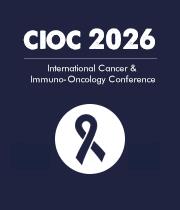Title : Advanced nanoparticles, the hallmark of targeted drug delivery for osteosarcoma
Abstract:
Osteosarcoma (OS) is a malignant bone cancer often linked to bone degradation caused by excessive osteoclast activity. Recent advancements in nanotechnology have greatly advanced the development of tumor-specific drug delivery nanocarriers (NCs), including smart and functionalized NCs, aimed at improving targeting, efficiency and enhancing the therapeutic outcomes for OS. Both passive and active tactics can be used to achieve targeting. The Enhanced Permeability and Retention (EPR) effect is necessary for passive targeting of bone tissue. Bisphosphonates (BPs), tetracycline, phosphonic acid, monoclonal antibodies (MAbs), and oligopeptides are ligands that are used to create drug conjugates for active targeting because they have a high affinity for hydroxyapatite, a key component of bone. Nanocarriers have emerged as a viable technique in osteosarcoma treatment due to their capacity to increase targeting, control medication release, and bioavailability. Liposomes, polymers, micelles, and dendrimers are common organic nanocarriers employed for medication encapsulation in osteosarcoma therapy. Inorganic nanocarriers, on the other hand, frequently consist of metallic nanoparticles such as mesoporous silica, calcium phosphate carriers and carbon-based nanomaterials. Their large surface area and superior stability contribute significantly to better drug release patterns and bioavailability. Smart nanoparticle (NP) strategies enable effective targeting of bone tissue using both small therapeutic agents and macromolecules. Recent advancements in osteosarcoma treatment include gene therapy and T cell therapy. Gene delivery, achieved through viral and non-viral vectors, has shown promising results by significantly increasing cancer cell death. One such approach, gene-directed enzyme prodrug therapy (GDEPT), relies on the ability of a gene product expressed in transduced cells to convert an otherwise non-toxic prodrug into a toxic agent. A key advantage of this method is that complete expression across all tumor cells is not required to achieve tumor eradication. In T cell therapy, a patient's T cells are genetically altered to produce chimeric antigen receptors (CARs), which are particular for identifying and eliminating cancer cells. Human epidermal growth factor receptor 2 (HER2), interleukin-11 receptor alpha (IL11Rα), melanoma-associated antigen (MAG), and G antigen (GAGE) family members are among the tumor-associated antigens that have been found to be targets in osteosarcoma (OS). T cell therapy involves genetic engineering of a patient’s T cells to express chimeric antigen receptors that specifically recognize and eliminate cancer cells. The various tumor-associated antigens associated with OS include human epidermal growth factor receptor 2 (HEGR2), interleukin 11 receptor alpha (IL11Rα), melanoma-associated antigen (MAG) and g melanoma antigen (GAGE) family members. Nanoparticulate drug delivery systems, drug conjugates, and cutting-edge therapies like gene therapy and T cell therapy show considerable potential in the treatment of osteosarcoma. These innovative approaches offer more precise targeting, greater therapeutic effectiveness, and the ability to address the shortcomings of traditional treatment methods.



